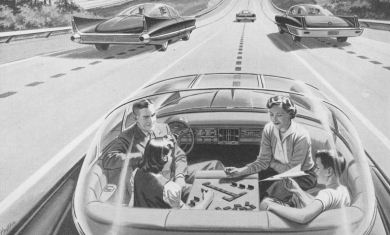Turn self-driving cars into offices? That'll take 30 years
There's a rush to transform vehicle interiors for an autonomous era, but safety constraints make turning concepts into reality an arduous task
As the widespread deployment of autonomous vehicles becomes a more plausible, and perhaps even inevitable, development, automakers and their tech-minded counterparts have doubled down on interior concepts like the one envisioned six decades ago.
But for all the excitement, these ideas are further away than most people think because they are simply too dangerous for passengers. Accidents that seem minor today take on a whole new level of danger once the passengers move out of a traditional forward-facing belted-in position.

29. November 2018
AUTOMAT VOR ORT: KONFERENZ AUTOMATICAR 2020
Am 16. September findet der Fachkongress AUTOMATICAR zum 2. Mal änlässlich der ...
»weiterlesenAUTOMAT vor Ort: Konferenz AUTOMATICAR
Am 12. April fand das erste Mal die von der Mobilitätsakademie des TCS organisierte ...
»weiterlesenAutomat vor Ort: EPTA Conference 2017
EPTA Conference 2017 „Shaping the Future of Mobility“ Luzern, Verkehrshaus, Mittwoch, 8. ...
»weiterlesenAuto-mat vor Ort: Automatische Shuttlebusse tpf
Am 22. September war www.auto-mat.ch live vor Ort, als die ersten beiden automatischen ...
»weiterlesen


